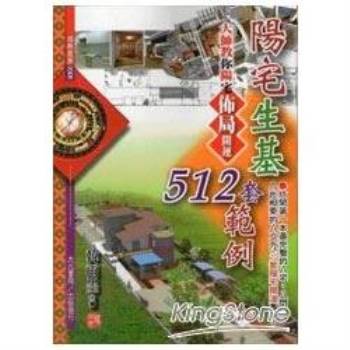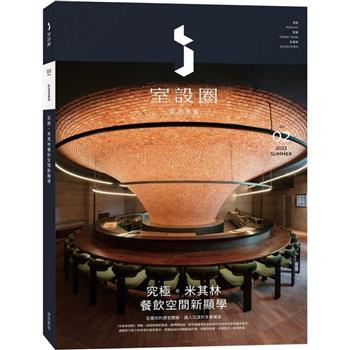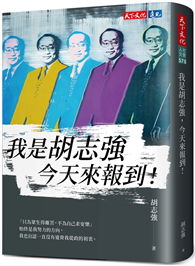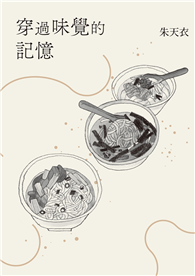本書從「節俗信仰」的角度觀察馬來西亞華人社會的宗教現象,並將之與臺灣、港澳對照比較,提出以下幾個主要論點:首先,多種族、多宗教的文化處境,使馬國的華人宗教受到友教「教節一體」的激發,不論佛、道信仰,參與節俗的比例均甚高,從而形成「敎、節一體化」的共同趨向;其次,在馬六甲、吉隆坡義山搬遷事件與檳城的宗祠祭祖,均強調其「聖教」屬性及神聖性用途。再者,對照同屬「理念移植」的代巡與九皇、仙師爺與唐番土地,後者能普及化的原因就在其節俗性質,較諸神廟便於跨越地緣與血緣關係,故建國後才方便凝聚華人,發展為九皇節、福德文化節。最後,華人善於利用「聯合的藝術」組織宗教團體。小則以慶讚中元的名義聯合街區、神廟力量,目標即捐助華教;大如道教總會,以「道教」名義聯合神廟,促使國民登記局改正宗教欄,並增加「道教」選項。凡此種種,都彰顯馬華宗教從「聖教」到「道教」的衍變,本書即透過節俗信仰論證華族亟需歸屬感,對內凝聚,對外則便於識別。
| FindBook |
有 5 項符合
從聖教到道教:馬華社會的節俗、信仰與文化【限量精裝版】的圖書 |
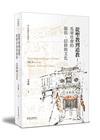 |
從聖教到道教─馬華社會的節俗、信仰與文化(限量精裝版) 作者:李豐楙 出版社:國立臺灣大學出版中心 出版日期:2018-05-15 語言:繁體中文 規格:精裝 / 584頁 / 15 x 23 cm / 普通級/ 部份全彩 / 初版 |
| 圖書選購 |
| 型式 | 價格 | 供應商 | 所屬目錄 | $ 537 |
宗教命理 |
$ 537 |
宗教類 |
$ 598 |
中文書 |
$ 598 |
文化研究 |
$ 598 |
Others |
|---|
| 圖書館借閱 |
| 國家圖書館 | 全國圖書書目資訊網 | 國立公共資訊圖書館 | 電子書服務平台 | MetaCat 跨館整合查詢 |
| 臺北市立圖書館 | 新北市立圖書館 | 基隆市公共圖書館 | 桃園市立圖書館 | 新竹縣公共圖書館 |
| 苗栗縣立圖書館 | 臺中市立圖書館 | 彰化縣公共圖書館 | 南投縣文化局 | 雲林縣公共圖書館 |
| 嘉義縣圖書館 | 臺南市立圖書館 | 高雄市立圖書館 | 屏東縣公共圖書館 | 宜蘭縣公共圖書館 |
| 花蓮縣文化局 | 臺東縣文化處 |
|
|
圖書介紹 - 資料來源:博客來 評分:
圖書名稱:從聖教到道教:馬華社會的節俗、信仰與文化【限量精裝版】
內容簡介
作者介紹
作者簡介
李豐楙
政治大學名譽講座教授、中央研究院中國文哲研究所兼任研究員。學術領域為道教文學、道教文化及華人宗教,曾出版專著六種、論文兩百餘篇:學生書局有道教文學專著三種,北京中華書局「李豐楙道教文學研究系列」收錄三種,以及十餘種田野調查報告;近年來主編《道法海涵》叢書(新文豐出版公司)。
早期從事道教文學研究,其後持續擴及道教文化、華人宗教,曾提出本土化的「常與非常」理論,解釋節慶狂歡、變化神話、神道思維及明清謫凡小說等,企圖與西方理論、如「聖與俗」對話。認為華人社會既有其思想、信仰、神話及習俗,從民族思維詮釋其宗教信仰,始可理解其中的文化心理。在中研院任職期間參與馬來西亞調查計劃,針對華人在多元化種族、文化的社會處境中,因而激發其宗教創意。
李豐楙
政治大學名譽講座教授、中央研究院中國文哲研究所兼任研究員。學術領域為道教文學、道教文化及華人宗教,曾出版專著六種、論文兩百餘篇:學生書局有道教文學專著三種,北京中華書局「李豐楙道教文學研究系列」收錄三種,以及十餘種田野調查報告;近年來主編《道法海涵》叢書(新文豐出版公司)。
早期從事道教文學研究,其後持續擴及道教文化、華人宗教,曾提出本土化的「常與非常」理論,解釋節慶狂歡、變化神話、神道思維及明清謫凡小說等,企圖與西方理論、如「聖與俗」對話。認為華人社會既有其思想、信仰、神話及習俗,從民族思維詮釋其宗教信仰,始可理解其中的文化心理。在中研院任職期間參與馬來西亞調查計劃,針對華人在多元化種族、文化的社會處境中,因而激發其宗教創意。
目錄
序
導論:「以教之名」
第一部分 聖教的發現
第一章 效忠與留根:在義山搬遷事件中馬華的政治修辭
一、從書寫到詮釋:印刷資本主義的現代思維
二、從發展到保存:開發中國家的難題
三、漢麗寶與葉亞來:親善、情誼與效忠的象徵
四、聖教的發現:從法令到憲法的宗教認知
五、認同:兩種立場的不同理解
六、美化與觀光:古城與首都的宏願
七、結語
第二章 祖德與族義:檳城華人在宗祠祭祀中的聖教觀
一、宗祠:馬來西亞華人的聖教標誌
二、公司:聖教與儒教的運作方式
三、義山:公塚條規中的「聖教」佐證
四、祖德:儀式空間中的神道之教
五、祭祖:王化仿效的祭祀儀式祭祖
六、祖德與族義:一個比較的文化觀察
七、結語
第二部分 南土的下巡
第三章 代巡南邦:馬六甲勇全殿的王爺信仰及衍變
一、1919、1933與2001、2012:從王醮到清醮的名義變化
二、王醮古例:三壇競合而獨缺禮生
三、清醮:2001年之後的時代新意
四、巡境:古今代巡的空間變化
五、代天巡狩:檳城王爺的另一種佐證
六、甲州清醮:二十一世紀的送王舡儀式
七、結語
第四章 九皇下巡:九皇星君在大馬的本相與變相
一、建國前後的九皇信仰:本相與變相問題
二、從王船到九皇船:九皇信仰的變相之一
三、九皇隱喻:會黨文化下的變相
四、九皇齋:道教傳統信仰的本相
五、內殿祭祀與遊行陣頭:九皇出巡的本相
六、內殿祭祀與陣頭遊行:迎送九皇爺的真相
七、結語
第三部分 理念的移植
第五章 整合與跨越:仙師爺的非常性神格及信仰傳布
一、仙師爺信仰的形成:王法仿效與理念移植
二、仙師爺與葉亞來
三、仙師爺信仰與錫礦產業
四、死將統領理念與神話創造
五、跨越:建國前後仙師信仰的轉型
六、結語
第六章 敬天祀地:節俗信仰的理念移植
一、節俗信仰:華人興革調查與「華人宗教」觀點
二、離散與信仰:從「譬彼猶太人」到大馬華人
三、敬天:南天理念的移植及重建
四、唐番土地:斯土斯神的祀地理念
五、宜家宜居:神道理念下的華人之家
六、結語
第四部分 聯合的藝術
第七章 普度:檳州中元聯合會與華校華教
一、「檳州中元聯合會」的華校籌款運動
二、崇德華小與中元聯合會:一個捐募實例的個案
三、街區聯合:跨越方言群的宗教行動
四、節俗複合:跨越方言群的團結象徵
五、聯合的藝術:民間社團與華校的合作模範
六、結語
第八章 以教之名:「馬道總」與神廟的聯合
一、道教:民間、官方與學者三種觀點下的認知
二、文化根柢:制度、擴散與組織三型中的道教資源
三、以教之名:「馬道總」聯合行動的內在動力
四、大馬卡改正登記道教:道總二十年的歸宗運動
五、結語
第九章 結論
參考書目
索引
導論:「以教之名」
第一部分 聖教的發現
第一章 效忠與留根:在義山搬遷事件中馬華的政治修辭
一、從書寫到詮釋:印刷資本主義的現代思維
二、從發展到保存:開發中國家的難題
三、漢麗寶與葉亞來:親善、情誼與效忠的象徵
四、聖教的發現:從法令到憲法的宗教認知
五、認同:兩種立場的不同理解
六、美化與觀光:古城與首都的宏願
七、結語
第二章 祖德與族義:檳城華人在宗祠祭祀中的聖教觀
一、宗祠:馬來西亞華人的聖教標誌
二、公司:聖教與儒教的運作方式
三、義山:公塚條規中的「聖教」佐證
四、祖德:儀式空間中的神道之教
五、祭祖:王化仿效的祭祀儀式祭祖
六、祖德與族義:一個比較的文化觀察
七、結語
第二部分 南土的下巡
第三章 代巡南邦:馬六甲勇全殿的王爺信仰及衍變
一、1919、1933與2001、2012:從王醮到清醮的名義變化
二、王醮古例:三壇競合而獨缺禮生
三、清醮:2001年之後的時代新意
四、巡境:古今代巡的空間變化
五、代天巡狩:檳城王爺的另一種佐證
六、甲州清醮:二十一世紀的送王舡儀式
七、結語
第四章 九皇下巡:九皇星君在大馬的本相與變相
一、建國前後的九皇信仰:本相與變相問題
二、從王船到九皇船:九皇信仰的變相之一
三、九皇隱喻:會黨文化下的變相
四、九皇齋:道教傳統信仰的本相
五、內殿祭祀與遊行陣頭:九皇出巡的本相
六、內殿祭祀與陣頭遊行:迎送九皇爺的真相
七、結語
第三部分 理念的移植
第五章 整合與跨越:仙師爺的非常性神格及信仰傳布
一、仙師爺信仰的形成:王法仿效與理念移植
二、仙師爺與葉亞來
三、仙師爺信仰與錫礦產業
四、死將統領理念與神話創造
五、跨越:建國前後仙師信仰的轉型
六、結語
第六章 敬天祀地:節俗信仰的理念移植
一、節俗信仰:華人興革調查與「華人宗教」觀點
二、離散與信仰:從「譬彼猶太人」到大馬華人
三、敬天:南天理念的移植及重建
四、唐番土地:斯土斯神的祀地理念
五、宜家宜居:神道理念下的華人之家
六、結語
第四部分 聯合的藝術
第七章 普度:檳州中元聯合會與華校華教
一、「檳州中元聯合會」的華校籌款運動
二、崇德華小與中元聯合會:一個捐募實例的個案
三、街區聯合:跨越方言群的宗教行動
四、節俗複合:跨越方言群的團結象徵
五、聯合的藝術:民間社團與華校的合作模範
六、結語
第八章 以教之名:「馬道總」與神廟的聯合
一、道教:民間、官方與學者三種觀點下的認知
二、文化根柢:制度、擴散與組織三型中的道教資源
三、以教之名:「馬道總」聯合行動的內在動力
四、大馬卡改正登記道教:道總二十年的歸宗運動
五、結語
第九章 結論
參考書目
索引
序
序
在馬來西亞從事華人社會的宗教調查,前後約六年(2002-2007),十年後回顧此一調查計畫,當初中央研究院開展東南亞調查計畫─由蕭新煌教授主持,後來又擴及整個亞太地區。此一區域性研究在國際化形勢下,臺灣學界以往較為疏忽,若能累積一定的學術成果即有發言權,臺灣既位處太平洋島鏈,此一學術領域其實不宜忽視。一般來說,臺灣學界一向標榜放眼世界,而習慣緊盯著歐美地區的學術風向,但也不宜忽略鄰近的東南亞國家、乃至亞太地區。過去既已著力於兩岸關係,也關心東北亞的日、韓諸國,若能進而關懷東南亞地區,雖然起步時間較晚,但臺灣仍掌握先天的優勢:諸如地理條件、種族因素,故值得政府與學界多加關注。
當初參與東南亞調查計畫,乃因任職於中央研究院中國文哲所,蔡源林與陳美華賢伉儷起意,共同提出此一調查計畫,才促成此一難得的學術因緣。在東南亞國家、尤其新馬地區,華人分布既廣且多,所保存的華人宗教較為素樸,有些已歷經調整而在地化,其田野情況實在引人好奇。若能比較臺灣經驗,其變與不變即可作為參照之用,惜乎臺灣學界對此一領域總是遲滯不前。反觀日本早已關注及此,且持續了數個世代,均由著名的學者領軍,如日比野丈夫、野口鐵雄等,其成果累積頗為可觀;歐美學界多屬個別計畫,對馬來農村的調查頻著佳績,間也觸及華人宗教與社會的調查。臺灣雖曾有李亦園教授的早期開拓,可惜未能持續且後繼乏人。此一領域的研究風氣不盛,原因在缺少整體的規劃,研究經費受限,導致調查工作遲未展開,既不重視,成果也較少,其空白亟待補實。正因如此,團隊甫一推動即倍受院方呵護,申請一年即給兩年,兩年則延三年;從這種情況顯示院方已發現問題的癥結,乃鼓勵有志者前進此一南方沃土。
調查團隊先後分作兩批,分散於兩個地方,先是馬來西亞,後來又加入印尼,唯尚未擴及中南半島的越南、泰國等,即因計畫生變而宣吿中止。當初的規劃即針對區域性宗教問題,而不限於政治、經濟等課題,認為若要瞭解當地就不宜輕忽宗教。蔡源林教授負責伊斯蘭教與華人穆斯林,佛教部分則由陳美華教授承擔;由於「華人宗教」的範圍既廣且多,除了佛教外,其他項目統一由我負責。前後六年間即按照進度完成,團隊間彼此分享寶貴的經驗,以免疏忽多元化宗教與社會的複雜性。這些初步成果雖然只是調查報告,卻成為撰寫本書的基礎材料;其重點凡三:首即考慮華人宗教的範圍較廣,乃決定聚焦於「節俗信仰」,並以少數神廟信仰作為對照;次即針對華人宗教的社會處境,面對多元化宗教的環境如何因應?其三則採取比較視角,並非嚴格定義下的「比較宗教」,而以臺灣及港澳地區作對照,從融合為一的現況辨明細節。只有經由對照、比較才能論證其變化的意義,內則各民系雜錯而居而加速交流,對外則方便識別於友族友教,故變或不變都遵循一定的歷史軌跡。
本書即針對異同追溯其源,並關注其在地的變化,期與學術社群展開對話;乃因以往累積的成果,各國都各有其優勢及專長:馬國學者擁有在地的優勢,既觀察方便取材也豐富;西方學者則專長理論、方法,所作的詮釋常有理論支持;而日本學界擅於團隊分工,綜合全體的成果頗為可觀。面對這種競合關係,乃從三點切入:一即比較、對照臺港澳與馬華社會,其中既銘刻著歷史文化的變化,也就反映其因應之道與集體需求;其二在多元化宗教的處境中,友族既各有其友教、友節,早期華人既揭舉「聖教」之名,後來為了參與宗教協調會就選擇「道教」名義,這種「以教之名」的現象,顯示其宗教意識乃是「被喚醒」的。其三選擇從節俗信仰切入的原因,乃因1998年所公布的「華人思想興革」報告,曾經統計信奉佛教與儒、道及傳統信仰者高達88%,其中又有85%會參加「傳統節日」,亦即華人多數會參加節慶活動。友族友教既然「教節一體」,華人既重視傳統節日,是否也會朝向「教、節一體化」發展?此乃本書的調查重點,為了避免浮泛的印象描述,即選擇八、九個實例作為觀察對象,據以解釋其如何不變,有些又為何與時俱變。
調查結束後歷經數年思索,確定馬國經驗就和臺灣一樣,其價值就是華人世界的「宗教實驗場」。在馬國華族既需因應國家權力,也要適應多元宗教、多元社會的文化環境,只要比較其他華人世界,即可發現其節俗信仰或節俗、信仰,既有文化載體的功能及意義,也以此彰顯其民族氣派。故「華人宗教」可以和「華教」(華語教育)等量齊觀,既關係華族的文化歸屬,也與友族友教友節成為文化識別。在東南亞諸國的變化各異,相較於泰國、新加坡等國華人,馬國華族既兼顧了華教與華人宗教,其節俗、信仰乃得以保存下來,並未被馬來文化、伊斯蘭教所同化,此一現象值得關懷。故特別選擇了節俗信仰為觀察目標,又以兩個神廟信仰作為對照,論述其節慶活動的變化,這樣的特色雖非馬華社會獨有的,卻最能凸顯華族共同的文化特質。
在華人聚居區的視覺印象就是神廟與祠堂,其一象示地緣、另一則為血緣,乃公儀式與私儀式的舉行場所,其中就包含許多的節俗活動。相較於友族、友教分別享有節慶假期,華人在節慶中也隱含了歷史、神話,即有助於「教、節一體化」的可能性,唯這種信仰能否視同「宗教」?在興革調查的結論中曾預估:十年間道、儒及傳統信仰將大幅減少,且是大量移向佛教!據此即可客觀分析這個問題:「道教」未來的發展是否遲滯不前?完成調查迄今又經十年,傳統信仰是否真的移向佛教?由於興革調查時「道教總會剛剛成立」,即被提醒「如何推動正信道教信仰,把各自為政的道觀組織起來?」所謂「道觀」應指神廟─臺灣通稱「道廟」,各民系既視為其信仰中心,問題在不容易被組織起來。這個難題正好契合本計畫的方向,既可覆察神廟和道教之間的關係,並檢驗其預測的準確與否!
本書的研究整合了經典文本、歷史文獻與田野調查,觀察方言群的變化,從分籍萃居到雜錯而居,所帶動的節俗交流即保存在文化遺跡中。興革調查曾列出七個傳統節日:新年、元宵節、清明節、端午節、中元節、中秋節及冬至,從中選擇其二:清明節與中元節,配合義山掃墓和檳城普度;又增補另外三個:九皇節、重陽節及土地公節,在重陽節有宗祠祭祖,祠堂具有收族的價值及意義,就像2013年檳州各姓氏宗祠聯委會出版的《檳州宗祠家廟簡史》,春秋二祭至今仍被完整的保存下來。另外兩個是九皇節和福德文化節,在華人世界同樣也有「土地公生」,這種活動在馬國有其獨特處,就是基於「斯土斯神」意識而祭拜唐番土地、尤其是拿督公;另一個九皇節,在其他華人世界僅屬道觀、道廟的活動,在大馬則是建國後蓬勃發展,快速傳布於華人聚居區。這兩個節慶既是傳統活動也有在地化意義,可補充興革調查的缺遺。加上對照性的兩種神廟信仰:代天巡狩和仙師爺信仰,總共八、九個實例,均屬「非(日)常性」的節慶、廟會,由此反觀日常(常)的社會生活。
從調查後到增補完成,即依循主題及時間序分作四部分,以四個主題含括節俗、信仰:「聖教的發現」為義山和宗祠的祖先祭祀;「南土的下巡」則以代巡王爺對照九皇爺信仰,初期移民「落番」後遺留的文化優越感,在匾額上標示著「威震南蠻」與「威顯南邦」,建國後的變化就是轉變為一般神廟;相對的九皇信仰則在建國後加速發展,其節俗化即朝向全華民化。其三「理念的移植」即以仙師爺信仰對照天公、土地信仰,敬天在正月初九,祀地則為春祈秋報,均非仰賴神像而僅依理念即可移植,既在斯土則祭拜斯神,此即唐番土地、拿督公普遍於全馬的緣由。最後特別採取「聯合的藝術」為題,呼應華人社會所呼籲的團結意識,所選擇的兩個例證均以「聯合」名義達到團結目的:檳州中元聯合會即聯合為了華教;道教所聯合的總會,則「把各自為政的道觀組織起來」。距離成立時間剛好二十年,即可檢討佛、道二教間有所起伏,印證此一「宗教實驗場」如何借道教之名聯繫華人世界。
這些紛繁的現象如何一以貫之?緣於2016年8月陪內人苑如訪問哈佛大學,在波士頓駐留的半年期間,外緣暫斷而得以有暇統整,苑如既打理日常生活起居,亦有空閒在安靜的華宅區散步、討論,更盡力幫忙搜尋學界的相關資訊,以彌補先前的一些疏漏。此一期間林瑋嬪教授亦適赴美,即以其人類學專長提供建議,提醒關注當地學界訊息及學風變化,諸如James C. Scott有關「Zomia」的論點。在反覆思索後決定大幅改寫,使四個主題能夠層次分明,主線則為「從聖教到道教」,在此一架構下聯繫了八個子題,關鍵即將「以教之名」作為核心觀念。此種思考並不依賴現成理論,僅就宗教學的基本課題:「教、節一體」,思考華人節慶能否朝向「教節一體化」?並能作為華族的一種文化共同體。
在馬來西亞研究的學術社群中,所對話的並非James C. Scott等所作的馬來農村調查;而是周福堂、Jean Debernardi等均曾涉及的「節俗信仰」。本書則從比較視角對照臺灣間及港澳經驗,此一課題有助於反/返觀中國。此時適逢臺大出版中心籌劃「臺大哈佛燕京學術叢書」,苑如和瑋嬪即為倡議者,編委會也強調其方向:從邊緣看中央,與此稿有同取向。經召集人陳弱水教授與編輯委員共議:遠送馬國審查後通過。此一叢書出版嚴謹,以期精美、完善的水準,在此感謝紀淑玲小姐豐富的經驗及費心的編輯,方能裝幀完美、圖文並茂。在修正過程中,苑如關心進度,還勞煩陳雅琳小姐編訂,使失誤減到最低;照片則由苑如、陳晶芬、洪瑩發、蔡武晃所提供,並蒙蘇慶華教授聯絡黃文斌教授、曾衍盛,首肯翻拍書中照片,均致以無限的謝意。
此一調查能持續多年,必須感謝的單位和親友甚多:首即中央研究院「東南亞調查計畫」的支持,才能完成東南亞之行。其次感謝在馬國期間所認識的朋友,尤其王琛發博士多方義助,乃有「孝恩文教基金會」的幫助,並熱心引介擴大人脈,例如陳榮發協助九皇爺與中元節調查;在調查將盡之際還介紹了畫家朋友,承他慨贈一幅畫稿,自嫌尚未及上色,唯一見即感覺可作為封面,乃因其寓意:在輪廓上僅塗上第一筆,其餘則有待來茲;就像在馬華社會的宗教研究中,本書僅是第一筆。此外還要感謝許多朋友,檳城杜忠全、陳秋平,馬六甲蘇汶財,經蘇慶華教授引介,方能完成送王舡調查;又勞煩黃家全先生提供寶貴的經驗。最後必須感謝家人,猶記得有一次從馬六甲到檳城時,行前母親的病況加劇,唯執行計畫有時間的壓力,最後還是決定成行。在馬六甲突然接獲苑如急電「母親病危」;到了檳城後半夜驚醒,但見街燈清冷,心中遲疑不安,一早琛發即轉告臺北來電:「母親已逝!」隨即束裝返臺。為了完成任務而無法隨侍在側,至今猶心痛而深感遺憾!此次全書改寫期間,感謝苑如的長期支持,若非如此實在無法如期完成,故特誌於此謹以為序。
在馬來西亞從事華人社會的宗教調查,前後約六年(2002-2007),十年後回顧此一調查計畫,當初中央研究院開展東南亞調查計畫─由蕭新煌教授主持,後來又擴及整個亞太地區。此一區域性研究在國際化形勢下,臺灣學界以往較為疏忽,若能累積一定的學術成果即有發言權,臺灣既位處太平洋島鏈,此一學術領域其實不宜忽視。一般來說,臺灣學界一向標榜放眼世界,而習慣緊盯著歐美地區的學術風向,但也不宜忽略鄰近的東南亞國家、乃至亞太地區。過去既已著力於兩岸關係,也關心東北亞的日、韓諸國,若能進而關懷東南亞地區,雖然起步時間較晚,但臺灣仍掌握先天的優勢:諸如地理條件、種族因素,故值得政府與學界多加關注。
當初參與東南亞調查計畫,乃因任職於中央研究院中國文哲所,蔡源林與陳美華賢伉儷起意,共同提出此一調查計畫,才促成此一難得的學術因緣。在東南亞國家、尤其新馬地區,華人分布既廣且多,所保存的華人宗教較為素樸,有些已歷經調整而在地化,其田野情況實在引人好奇。若能比較臺灣經驗,其變與不變即可作為參照之用,惜乎臺灣學界對此一領域總是遲滯不前。反觀日本早已關注及此,且持續了數個世代,均由著名的學者領軍,如日比野丈夫、野口鐵雄等,其成果累積頗為可觀;歐美學界多屬個別計畫,對馬來農村的調查頻著佳績,間也觸及華人宗教與社會的調查。臺灣雖曾有李亦園教授的早期開拓,可惜未能持續且後繼乏人。此一領域的研究風氣不盛,原因在缺少整體的規劃,研究經費受限,導致調查工作遲未展開,既不重視,成果也較少,其空白亟待補實。正因如此,團隊甫一推動即倍受院方呵護,申請一年即給兩年,兩年則延三年;從這種情況顯示院方已發現問題的癥結,乃鼓勵有志者前進此一南方沃土。
調查團隊先後分作兩批,分散於兩個地方,先是馬來西亞,後來又加入印尼,唯尚未擴及中南半島的越南、泰國等,即因計畫生變而宣吿中止。當初的規劃即針對區域性宗教問題,而不限於政治、經濟等課題,認為若要瞭解當地就不宜輕忽宗教。蔡源林教授負責伊斯蘭教與華人穆斯林,佛教部分則由陳美華教授承擔;由於「華人宗教」的範圍既廣且多,除了佛教外,其他項目統一由我負責。前後六年間即按照進度完成,團隊間彼此分享寶貴的經驗,以免疏忽多元化宗教與社會的複雜性。這些初步成果雖然只是調查報告,卻成為撰寫本書的基礎材料;其重點凡三:首即考慮華人宗教的範圍較廣,乃決定聚焦於「節俗信仰」,並以少數神廟信仰作為對照;次即針對華人宗教的社會處境,面對多元化宗教的環境如何因應?其三則採取比較視角,並非嚴格定義下的「比較宗教」,而以臺灣及港澳地區作對照,從融合為一的現況辨明細節。只有經由對照、比較才能論證其變化的意義,內則各民系雜錯而居而加速交流,對外則方便識別於友族友教,故變或不變都遵循一定的歷史軌跡。
本書即針對異同追溯其源,並關注其在地的變化,期與學術社群展開對話;乃因以往累積的成果,各國都各有其優勢及專長:馬國學者擁有在地的優勢,既觀察方便取材也豐富;西方學者則專長理論、方法,所作的詮釋常有理論支持;而日本學界擅於團隊分工,綜合全體的成果頗為可觀。面對這種競合關係,乃從三點切入:一即比較、對照臺港澳與馬華社會,其中既銘刻著歷史文化的變化,也就反映其因應之道與集體需求;其二在多元化宗教的處境中,友族既各有其友教、友節,早期華人既揭舉「聖教」之名,後來為了參與宗教協調會就選擇「道教」名義,這種「以教之名」的現象,顯示其宗教意識乃是「被喚醒」的。其三選擇從節俗信仰切入的原因,乃因1998年所公布的「華人思想興革」報告,曾經統計信奉佛教與儒、道及傳統信仰者高達88%,其中又有85%會參加「傳統節日」,亦即華人多數會參加節慶活動。友族友教既然「教節一體」,華人既重視傳統節日,是否也會朝向「教、節一體化」發展?此乃本書的調查重點,為了避免浮泛的印象描述,即選擇八、九個實例作為觀察對象,據以解釋其如何不變,有些又為何與時俱變。
調查結束後歷經數年思索,確定馬國經驗就和臺灣一樣,其價值就是華人世界的「宗教實驗場」。在馬國華族既需因應國家權力,也要適應多元宗教、多元社會的文化環境,只要比較其他華人世界,即可發現其節俗信仰或節俗、信仰,既有文化載體的功能及意義,也以此彰顯其民族氣派。故「華人宗教」可以和「華教」(華語教育)等量齊觀,既關係華族的文化歸屬,也與友族友教友節成為文化識別。在東南亞諸國的變化各異,相較於泰國、新加坡等國華人,馬國華族既兼顧了華教與華人宗教,其節俗、信仰乃得以保存下來,並未被馬來文化、伊斯蘭教所同化,此一現象值得關懷。故特別選擇了節俗信仰為觀察目標,又以兩個神廟信仰作為對照,論述其節慶活動的變化,這樣的特色雖非馬華社會獨有的,卻最能凸顯華族共同的文化特質。
在華人聚居區的視覺印象就是神廟與祠堂,其一象示地緣、另一則為血緣,乃公儀式與私儀式的舉行場所,其中就包含許多的節俗活動。相較於友族、友教分別享有節慶假期,華人在節慶中也隱含了歷史、神話,即有助於「教、節一體化」的可能性,唯這種信仰能否視同「宗教」?在興革調查的結論中曾預估:十年間道、儒及傳統信仰將大幅減少,且是大量移向佛教!據此即可客觀分析這個問題:「道教」未來的發展是否遲滯不前?完成調查迄今又經十年,傳統信仰是否真的移向佛教?由於興革調查時「道教總會剛剛成立」,即被提醒「如何推動正信道教信仰,把各自為政的道觀組織起來?」所謂「道觀」應指神廟─臺灣通稱「道廟」,各民系既視為其信仰中心,問題在不容易被組織起來。這個難題正好契合本計畫的方向,既可覆察神廟和道教之間的關係,並檢驗其預測的準確與否!
本書的研究整合了經典文本、歷史文獻與田野調查,觀察方言群的變化,從分籍萃居到雜錯而居,所帶動的節俗交流即保存在文化遺跡中。興革調查曾列出七個傳統節日:新年、元宵節、清明節、端午節、中元節、中秋節及冬至,從中選擇其二:清明節與中元節,配合義山掃墓和檳城普度;又增補另外三個:九皇節、重陽節及土地公節,在重陽節有宗祠祭祖,祠堂具有收族的價值及意義,就像2013年檳州各姓氏宗祠聯委會出版的《檳州宗祠家廟簡史》,春秋二祭至今仍被完整的保存下來。另外兩個是九皇節和福德文化節,在華人世界同樣也有「土地公生」,這種活動在馬國有其獨特處,就是基於「斯土斯神」意識而祭拜唐番土地、尤其是拿督公;另一個九皇節,在其他華人世界僅屬道觀、道廟的活動,在大馬則是建國後蓬勃發展,快速傳布於華人聚居區。這兩個節慶既是傳統活動也有在地化意義,可補充興革調查的缺遺。加上對照性的兩種神廟信仰:代天巡狩和仙師爺信仰,總共八、九個實例,均屬「非(日)常性」的節慶、廟會,由此反觀日常(常)的社會生活。
從調查後到增補完成,即依循主題及時間序分作四部分,以四個主題含括節俗、信仰:「聖教的發現」為義山和宗祠的祖先祭祀;「南土的下巡」則以代巡王爺對照九皇爺信仰,初期移民「落番」後遺留的文化優越感,在匾額上標示著「威震南蠻」與「威顯南邦」,建國後的變化就是轉變為一般神廟;相對的九皇信仰則在建國後加速發展,其節俗化即朝向全華民化。其三「理念的移植」即以仙師爺信仰對照天公、土地信仰,敬天在正月初九,祀地則為春祈秋報,均非仰賴神像而僅依理念即可移植,既在斯土則祭拜斯神,此即唐番土地、拿督公普遍於全馬的緣由。最後特別採取「聯合的藝術」為題,呼應華人社會所呼籲的團結意識,所選擇的兩個例證均以「聯合」名義達到團結目的:檳州中元聯合會即聯合為了華教;道教所聯合的總會,則「把各自為政的道觀組織起來」。距離成立時間剛好二十年,即可檢討佛、道二教間有所起伏,印證此一「宗教實驗場」如何借道教之名聯繫華人世界。
這些紛繁的現象如何一以貫之?緣於2016年8月陪內人苑如訪問哈佛大學,在波士頓駐留的半年期間,外緣暫斷而得以有暇統整,苑如既打理日常生活起居,亦有空閒在安靜的華宅區散步、討論,更盡力幫忙搜尋學界的相關資訊,以彌補先前的一些疏漏。此一期間林瑋嬪教授亦適赴美,即以其人類學專長提供建議,提醒關注當地學界訊息及學風變化,諸如James C. Scott有關「Zomia」的論點。在反覆思索後決定大幅改寫,使四個主題能夠層次分明,主線則為「從聖教到道教」,在此一架構下聯繫了八個子題,關鍵即將「以教之名」作為核心觀念。此種思考並不依賴現成理論,僅就宗教學的基本課題:「教、節一體」,思考華人節慶能否朝向「教節一體化」?並能作為華族的一種文化共同體。
在馬來西亞研究的學術社群中,所對話的並非James C. Scott等所作的馬來農村調查;而是周福堂、Jean Debernardi等均曾涉及的「節俗信仰」。本書則從比較視角對照臺灣間及港澳經驗,此一課題有助於反/返觀中國。此時適逢臺大出版中心籌劃「臺大哈佛燕京學術叢書」,苑如和瑋嬪即為倡議者,編委會也強調其方向:從邊緣看中央,與此稿有同取向。經召集人陳弱水教授與編輯委員共議:遠送馬國審查後通過。此一叢書出版嚴謹,以期精美、完善的水準,在此感謝紀淑玲小姐豐富的經驗及費心的編輯,方能裝幀完美、圖文並茂。在修正過程中,苑如關心進度,還勞煩陳雅琳小姐編訂,使失誤減到最低;照片則由苑如、陳晶芬、洪瑩發、蔡武晃所提供,並蒙蘇慶華教授聯絡黃文斌教授、曾衍盛,首肯翻拍書中照片,均致以無限的謝意。
此一調查能持續多年,必須感謝的單位和親友甚多:首即中央研究院「東南亞調查計畫」的支持,才能完成東南亞之行。其次感謝在馬國期間所認識的朋友,尤其王琛發博士多方義助,乃有「孝恩文教基金會」的幫助,並熱心引介擴大人脈,例如陳榮發協助九皇爺與中元節調查;在調查將盡之際還介紹了畫家朋友,承他慨贈一幅畫稿,自嫌尚未及上色,唯一見即感覺可作為封面,乃因其寓意:在輪廓上僅塗上第一筆,其餘則有待來茲;就像在馬華社會的宗教研究中,本書僅是第一筆。此外還要感謝許多朋友,檳城杜忠全、陳秋平,馬六甲蘇汶財,經蘇慶華教授引介,方能完成送王舡調查;又勞煩黃家全先生提供寶貴的經驗。最後必須感謝家人,猶記得有一次從馬六甲到檳城時,行前母親的病況加劇,唯執行計畫有時間的壓力,最後還是決定成行。在馬六甲突然接獲苑如急電「母親病危」;到了檳城後半夜驚醒,但見街燈清冷,心中遲疑不安,一早琛發即轉告臺北來電:「母親已逝!」隨即束裝返臺。為了完成任務而無法隨侍在側,至今猶心痛而深感遺憾!此次全書改寫期間,感謝苑如的長期支持,若非如此實在無法如期完成,故特誌於此謹以為序。
|
